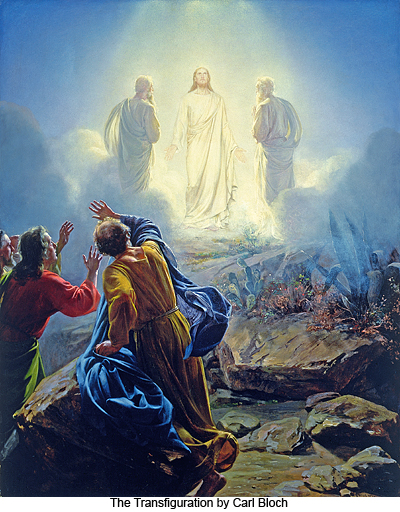According to BBC, religion can be defined as:
"Religion can be explained as a set of beliefs concerning the cause, nature, and purpose of the universe, especially when considered as the creation of a superhuman agency or agencies, usually involving devotional and ritual observances, and often containing a moral code governing the conduct of human affairs."
There are twelve (12) classical world religions—those religions most often included in history of world religion surveys and studied in world religions classes are: Baha'i, Buddhism, Christianity, Confucianism, Hinduism, Islam, Jainism, Judaism, Shinto, Sikhism, Taoism, and Zoroastrianism.
While these twelve (12) religions are depicted worldwide, the top five (5) religions most commonly known are: Buddhism, Christianity, Hinduism, Islam and Judaism. Although Hinduism is touted the world's oldest religion, there are others that have been around a long time as well, such as: Judaism, Taoism, Buddhism, and Jainism. A few older style religions are Zorastrianism, Confucianism, and Pantheism.
The following video shows the spread of Buddhism, Christianity, Hinduism, Islam, and Judaism over time:
The Monotheistic Religions (Christianity, Islam, Judaism)
(from Wikipedia.com)
The Polytheistic Religions (Buddhism, Hinduism)
(from Wikipedia.com)
(from Wikipedia.com)
Monotheism has been defined as the belief in the existence of one god or in the oneness of God. The Oxford Dictionary of the Christian Church gives a more restricted definition: "belief in one personal and transcendent God", as opposed to polytheism and pantheism. Also known as the Abrahamic religions, which traces its origins to Abraham, are monotheistic faiths of Middle Eastern origin. The chronological order of founding are Judaism (late 2nd millennium B.C.), Christianity (1st century A.D.) and Islam (7th century A.D.). While all adherents of the Abrahamic religions consider themselves to be monotheists, Judaism considers Christianity to be polytheistic, recognizing only Islam as monotheistic. Islam likewise does not recognize Christianity as monotheistic.
(from Wikipedia.com)
Polytheism is the worship of or belief in multiple deities usually assembled into a pantheon of gods and goddesses, along with their own religions and rituals. In most religions which accept polytheism, the different gods and goddesses are representations of forces of nature or ancestral principles, and can be viewed either as autonomous or as aspects or emanations of a creator (God). Polytheism was the typical form of religion during the Bronze Age and Iron Age, up to the Axial Age and the development of Abrahamic religions which enforced strict monotheism. Important polytheistic religions practiced today include Chinese traditional religion, Buddhism, Hinduism, Japanese Shinto, and the neopagan context.
Various Religious Programs Around the World
A BBC (British Broadcasting Corp.) TV religious series called "Around the World in 80 Faiths" can be viewed on You Tube. Peter Owen-Jones, an Anglican priest from Suffolk in the UK, travels to six continents and experiences the widest possible range of religious beliefs and practices. See: http://www.youtube.com/
The Shalom Show on TV is a public affairs television program that focuses on Israel and Jewish life subject matter with cultural, educational, and entertainment programming of interest to the American Jewish community. The show features magazine-style specials and in-depth interviews with Israeli and American leaders in politics, business, technology, medicine, education, culture, and entertainment.
Understanding Islam is a weekly educational show that broadcasts on Dubai One TV, a channel of Dubai Media Incorporated, and the broadcast covers the Middle East, Europe and Africa. Each Friday, the show highlights some of the tenets of Islam, and it aims at explaining the foundations of the Muslims faith by exploring it from different angles, from the simplest fundamentals to the most complex questions of how faith applies to everyday lives. Understanding Islam is prepared and presented by Dr. Mohammed Alkobaisi.
Currents is a daily Catholic news magazine television show on New Evangelization Television (NET), broadcast five (5) days a week from its studios in Brooklyn (USA). The program examines current events through the perspective of Catholicism.
The Buddhist Channel (BC) is a global news platform that provides current events, featured articles and reviews pertaining to Buddhism.
Hinduismtoday.com is an educational website that includes magazine articles, editorials, and Hindu news.
BBC-Religion: Islam is a guide to Islam, including history, beliefs, holy days around the world and various messages of faith.
Being Hindu is basically a guide to the Hindu beliefs and was produced by Summerhill Television for Vision TV. The show is based in Canada.
Being Hindu is basically a guide to the Hindu beliefs and was produced by Summerhill Television for Vision TV. The show is based in Canada.
Christian.com is a free social network dedicated to the entire Christian world.
Patheos.com provides balanced views of religion and spirituality.
Islamreligion.com is a network that provides the beliefs, practices and current events of Islam.
For further TV listings, please visit: http://wwitv.com/religious_tv/
---------------------------------------------------------------------------------------------------------------
---------------------------------------------------------------------------------------------------------------
For further information regarding "religion", please visit:
Religions of the World
The Definition of Religion
Comparison of World Religions
Timeline of Major & Other Religions
For further information regarding "religion", please visit:
Religions of the World
The Definition of Religion
Comparison of World Religions
Timeline of Major & Other Religions





_-_WGA12732.jpg)






